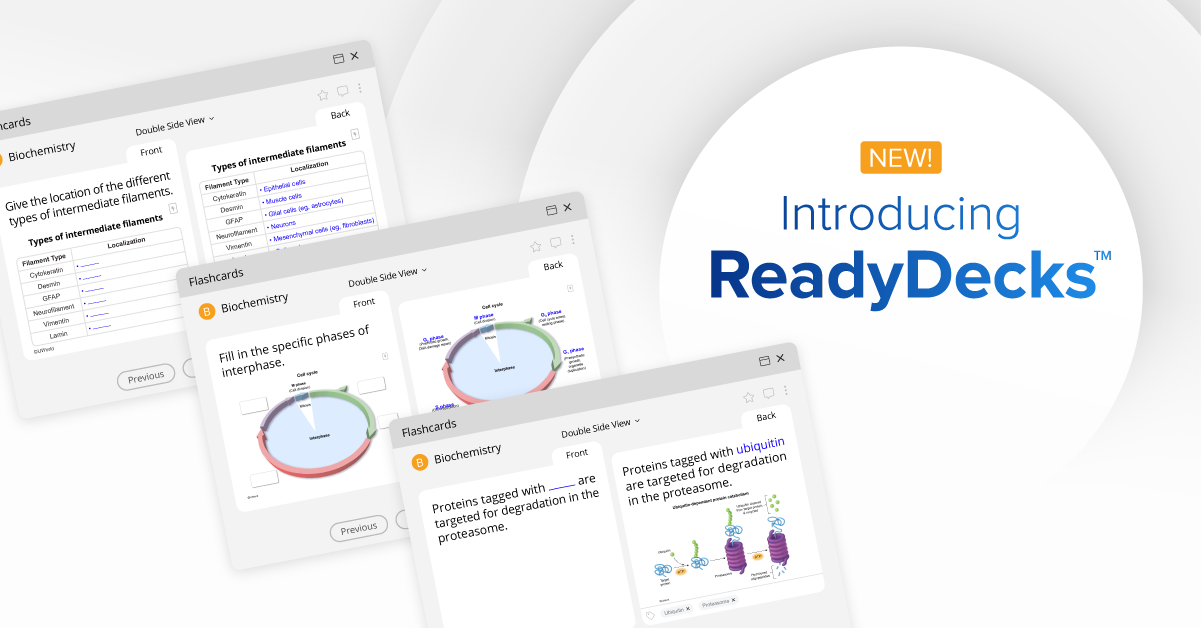By: Abi Felsted, M2
For me, UWorld is more than a question bank (QBank). It has become my number one learning tool in medical school. It is a resource that I reference every day to measure what I know and to diagnose my weak areas.
I wish I had realized sooner how much UWorld could help me, especially with my weak areas. In my M1 year, I initially felt like I didn’t have an adequate foundation to do QBank questions. So I waited. Then, once I started, I tended to fall back on the subjects I understood best. I struggled a lot with cardiology, so I avoided cardiology questions as much as possible. I convinced myself that I got it “enough.”
Then I did poorly on a cardiology exam, and it gave me a real kick-in-the-butt to finally get it together. I started doing UWorld cardiology questions, 15 at a time, selecting “Physiology, Pathology, Pathophysiology, and Pharmacology” as Subjects and “Cardiovascular System” under Systems. It was humbling and uncomfortable, but only then did I recognize just how much I truly didn’t know. And for the first time, I started to see real improvement in my grades.
I have used UWorld throughout my M2 year and was advised to set a goal of getting through the entire QBank twice. I began a few weeks into my first unit, doing around ten questions a day in Tutor mode. I used the practice tests to get things wrong, learn from my mistakes, identify weaknesses, and learn for both my school exams and future board exams. I realized that there was really no other way to pinpoint what I understood and what I didn’t. The content was necessary, but the questions were vital; they identified the holes in my understanding of a subject and showed me where to focus.
Here’s how I used, planned, practiced, and reviewed UWorld question sets to make my weak areas stronger.
1. Planning Question Sets
To ensure a systematic way of getting through all the questions in the QBank, many students create a schedule. I like to use an Excel spreadsheet to plan how many questions I need to review and when I plan to do them. I don’t record the number of questions I get correct because that doesn’t matter the first time. What matters is methodically getting through all the questions.
While the actual Step 1 exam features randomized questions, during M1 and M2, you should create practice tests that focus on the topics being covered in class. I like to start doing questions around a third of the way through a course block, so I have a foundation of the material and am more familiar with the terminology. I typically select the system I’m learning in class (eg, Dermatology) and begin by choosing the subjects of “Pathology, Physiology/Pathophysiology, and Pharmacology” since these are the topics most often tested.
I usually get a low percentage correct initially, but with time I do better and better. Not only do I become familiar with seeing the material presented in question form, but practicing helps me put together all the pieces of the puzzle. This ensures that when the test comes, I am prepared.
If I am struggling with a particular area, I use UWorld as another kick-in-the-butt to study (rather than avoid!) that area. For example, if I am studying for a course unit on Skin, Muscle, Bone, and Joint, and I notice through doing the QBank that I’m struggling on cutaneous infections, I do a block of ten “Dermatology” (System) “Skin and soft tissue infections” (Category) questions for every block of ten “Rheumatology/Orthopedics & Sports” (System) questions I do. This forces me to address something I’m struggling with until it gets easier.
2. Going Through the Questions
I got some QBank advice from a mentor that entirely changed my relationship with subjects I didn’t like: “Go through UWorld, and when you get something wrong, be glad it is not on the real test. Learn from it. But once you find an area you’re weak in, study it well enough that you never miss a question on that topic again.”
That advice sums up how I go through the questions. UWorld is designed so that each question is accompanied by a detailed explanation with either illustrations or organized tables. It’s like a very concise and organized textbook on precisely the topic you want to learn.
After each question, I not only read through the explanation but also re-read the stem. I want to see if I got the correct answer for the right reasons or missed something in the stem that I should have caught. In cases where I answered wrong, I ask myself if I picked out the essential clues but did not know the right next step.
Once I’ve reviewed the stem, my next move (especially for questions I get wrong) is to read through the entire explanation and use a whiteboard or notes to draw out details or pathways that I need to solidify. I often consolidate these details by adding them to my Flashcards deck or My Notebook. I make this effort because if I miss a question on a topic, I plan never to miss one like it ever again.
3. Reviewing the Most Relevant Information
There are many ways to review topics you find challenging, and each student will approach this differently. Within UWorld, I like to use the My Notebook and Flashcards features. I particularly like reviewing flashcards, and UWorld makes it really simple to add missed topics to a deck that you can flip through periodically. I also add missed topics to My Notebook if I just want to quickly search through the topics later.
Some students create disease scripts or keep an Excel spreadsheet of topics to review, but I find these take more time, and I prefer to use Excel sheets to plan rather than review information. However, no matter which tool you use to store and review the information, you want to know that you have learned the material well enough to crush round two, ie, when you go through UWorld the second time during your dedicated study period for Step 1.
Ultimately, I use UWorld every day. It’s the best way for me to discover what I don’t understand and to correct it. UWorld is the court where I practice to make game day a breeze, and it’s the key to making my weak points stronger!




